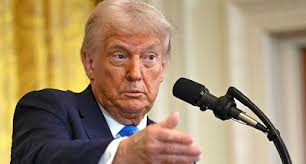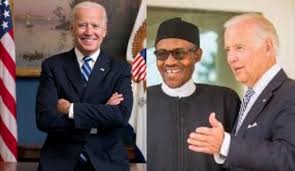Trump to Enforce 25% Tariffs on Steel and Aluminum Imports
The United States is set to impose a 25% tariff on steel and aluminum imports this week, President Donald Trump announced on Sunday, February 9. Speaking to reporters aboard Air Force One, Trump confirmed that the tariffs would apply to all steel entering the U.S., with aluminum imports facing similar restrictions. This move reinforces his long-standing protectionist trade policies designed to shield American industries from what he considers unfair foreign competition.
Trump has previously implemented similar tariffs, particularly during his first term, targeting major steel-exporting nations in Asia and Europe. The new measures are expected to impact Canada, Brazil, Mexico, and South Korea, with Canada—the largest supplier of steel and aluminum to the U.S.—likely to feel the effects most significantly. In recent weeks, Trump had already hinted at potential tariffs on Canada.
In addition to these tariffs, Trump announced plans for “reciprocal tariffs” on Sunday, explaining that these would be adjusted to match the rates imposed by other countries on American goods. “Every country will be reciprocal,” he stated, promising more details by midweek.
A History of Trade Tariffs Under Trump
Trump has long used tariffs as a tool in his broader trade strategy. Early in his presidency, he imposed levies on key trade partners—including China, Mexico, and Canada. While tariffs on Canada and Mexico were briefly suspended in exchange for commitments to tackle issues such as fentanyl trafficking and undocumented migration, his trade war with China escalated. Chinese imports were hit with a 10% tariff, prompting Beijing to retaliate with targeted tariffs on $14 billion worth of American goods, including coal and liquefied natural gas. In total, Trump’s tariffs now affect $525 billion worth of Chinese products.
Global Reactions and Concerns
World leaders have expressed concerns over Trump’s latest tariff measures. French President Emmanuel Macron urged the U.S. to redirect its trade efforts toward China instead of imposing tariffs on the European Union. In an interview with CNN, Macron warned that additional tariffs on Europe could drive up inflation and increase costs for American consumers.
Despite these warnings, Trump has indicated that the EU could face new tariffs as well. He has also issued a caution to Japan, stating that tariffs could be imposed on Japanese goods unless Tokyo works to reduce the U.S. trade deficit with Japan.
The Economic Impact
The U.S. trade deficit reached nearly $920 billion last year, further motivating Trump’s push for what he calls a “new golden age” of the American economy. While he insists that foreign exporters—not U.S. consumers—will bear the brunt of the tariffs, economists widely dispute this claim. Trump has acknowledged that Americans may experience economic hardships as a result of these policies.
Beyond trade, Trump has also used tariffs as leverage in diplomatic disputes. In one instance, he threatened Colombia with trade restrictions after the South American country blocked U.S. military planes carrying deported migrants. Facing pressure, the Colombian government eventually complied.
As Trump moves forward with his latest tariff plans, all eyes will be on how these measures impact global trade relationships and the U.S. economy.




